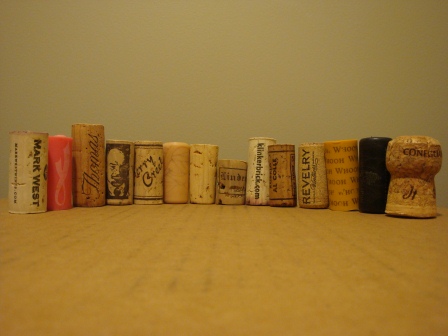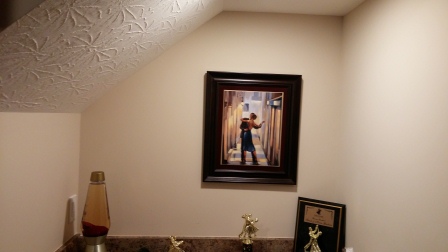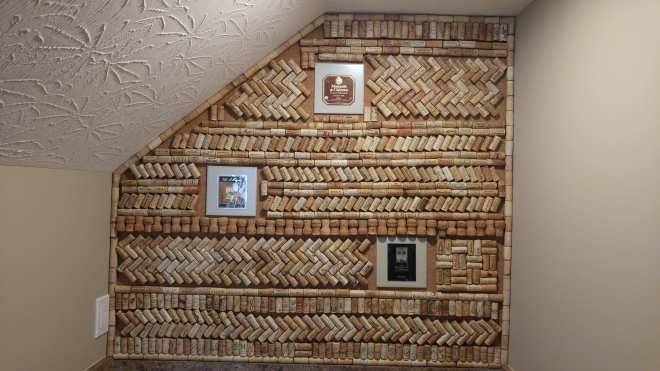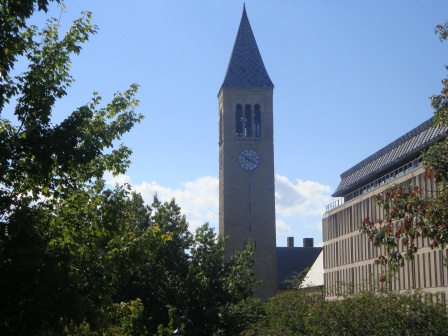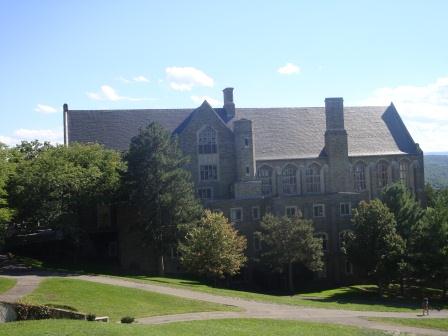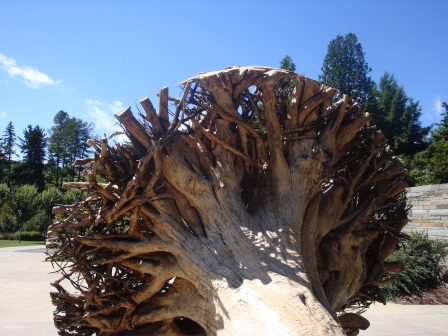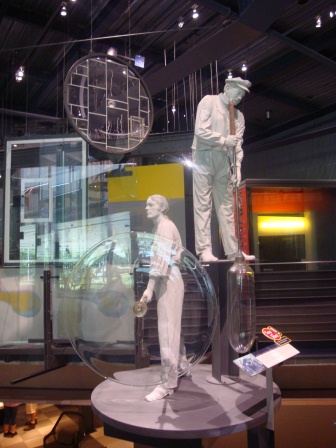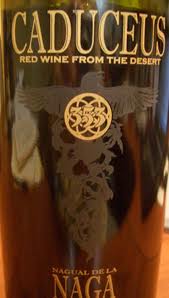Corks have a story. We may associate them with a vacation or a special occasion, Wineries make choices to display images, names, saying, regions, phone numbers, websites, and more.
Wine is a decorating theme in our home. Bottles, presses, and corks are easily found. (a past post)
In terms of corks, all wine corks are not created equal.
- In general, there are 3 types of corks: natural, composite, and plastic
- Natural cork is from the inner bark of an oak tree (yes, primarily the Cork Oak)
- The plastic even come in a variety of colors
- To me, the composites resemble pressed sawdust bound by a resin
- Corks have different lengths and diameters
- If corks display printing, some are printed vertically, others horizontally
- Some are printed the same on both sides, while others may have something different on the opposite side
This is a small cubby in our lower level. The angle on the upper left is the stairs. Some in our neighbors have a wet bar in the space, but we went with just the counter.
This past January, my wife showed me an interesting image from Pinterest. I suggested we could do that in the lower-level cubby. After researching possible designs on Google Images, ideas were racing through my mind. The key question was original free-form/abstract or uniform? Measurements and calculations allowed me to estimated the need for 1050-1100 wine corks (if corks occupied the entire space).
After the easier-than-expected collection phase, I began designing. My initial thought was to put together a variety of designs on the mock-up to see what we liked and disliked. But, as I got going, I changed and tweaked as I progressed.
A few weeks later we were in a new restaurant for my birthday, and we saw several cork designs – and my wife liked a particular uniform design. Because I had so many corks, I created a second mock-up (in about 40 minutes) so we could compare.
During my cork collecting phase, I got an idea that friends thought was crazy. Whereas people were shocked to learn that I was on the prowl for 1000 corks – but then I told them I changed my goal to 1000 different corks – and no plastic ones.
With two prototype designs completed, my wife and I preferred different designs. While she found the eclectic design too busy, I found it easier on the eyes. Whereas she liked the uniformity of second design, it was a blurred to my eyes. So the challenge became to create something relatively uniform to fit her taste, yet be easy on my eyes.
As for the actual construction, first step was cutting a piece of plywood to fit the back wall. This would serve as a surface for mounting the corks (as opposed to attaching them directly to the wall).
All the advance work led us to cover the plywood with cork shelf paper. This could help add depth to our design.
The actual construction was a slow process. After all, in most cases, we glued the corks individually – most of the 800+ one by one. We did most of the work on a table. After attaching the board to the wall, we completed the project. Voilà!
Factoids
- Longest dimensions: Bottom row 48 in (122 cm); Right side 40 in (101 cm)
- 860 corks used
- Only 2 plastic corks (because they were special to me)
- Plain/blank corks form a border around the design
- From the 860, subtracting the border places and the horizontal row of corks from sparkling wines – yes – no duplicates are displayed in the remaining 727

